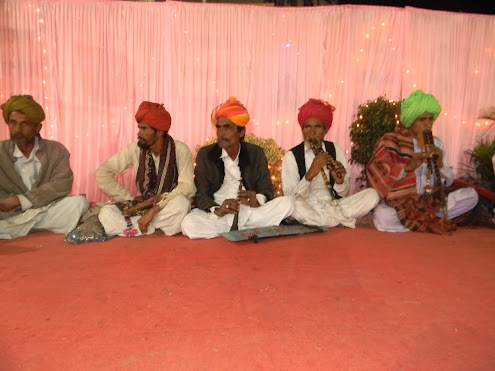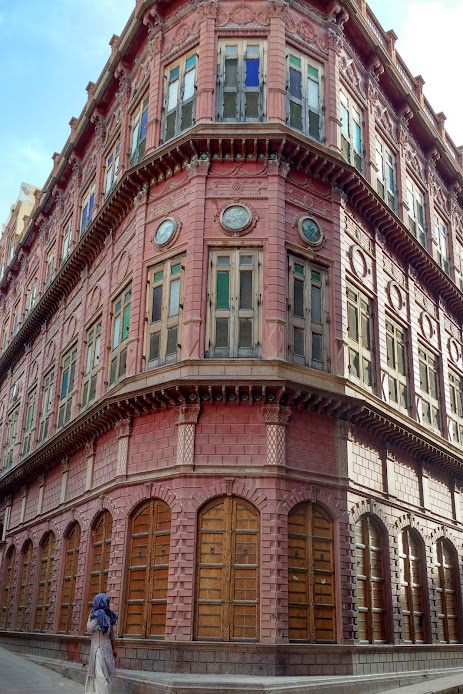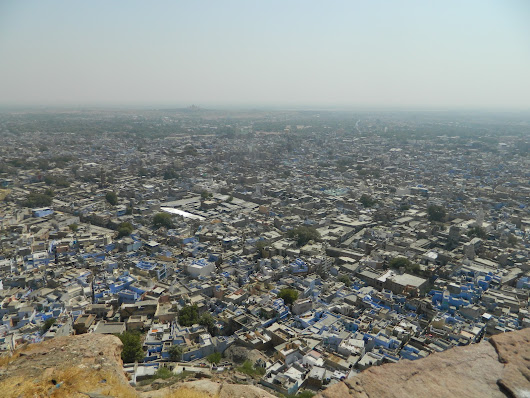Rajasthani Handmade Traditional Applique and Embroidery Patchwork
Source: Dr. Richa Singh
Rajasthan, often known as the "Land of Colours," or "Rangeelo Rajasthan" is well known for its colorful atmosphere, which permeates all facets of daily life in the region. The wide range of hues that define Rajasthan are the result of a number of elements. The attire donning during their several different ceremonies, festivities, rituals, folk dance performances and even on a regular basis is a visual delight. Rajasthani people are known for their vivid and strikingly coloured traditional clothing.
Rajasthani women's traditional attire consists of a ghaghra (voluminous skirt), kurti, choli or kanchli (blouse), and odhani (headscarf). Women in the past wore this ensemble in shanties and palaces alike, with the exception that the elite women used fabrics and ornaments which were expensive, and extravagant. Rajput women were customarily married off to far-off princely territories as part of the clan exogamy custom. As an outcome, various artistic and cultural components blended together in each ruling family's attire over the period of time. Exquisite textiles were employed, including gold and silver brocaded satins and silks. Zardozi embroidery, a kind of intricate and dense metal embroidery on a foundation of silk, satin, or velvet, was among their most favored pieces of needlework. Its roots can be found in Persia (Iran). Zar signifies gold and dozi means work in Persian. Ribbons with varying widths, woven with the threads of precious metals - gold or silver, were used to create borders for clothing or to create decorative features like flowers or creepers. The ribbons were often laced with semiprecious or precious stones, beads, or pearls.

Fig. i
Fig. ii
Vibrant pieces of clothing with zardozi and ribbon work worn by the Bikaneri royal ladies are depicted in figs. i and ii.
Sri Sadul Museum, Bikaner, Rajasthan
Source: Dr. Richa Singh
One of the highlights of Rajasthani weddings is the vibrancy, and cultural richness of the attire worn by the bride, bridegroom, family, relatives and guests. These elements add to the bright and celebratory atmosphere of the weddings and not just on the day of the wedding, but pre-wedding ceremonies too have numerous occasions exhibiting riots of colour.
Pre-Wedding Ceremony, Jodhpur
Source: Dr. Richa Singh
Ladies in Colourful Clothes with Traditional Jewellery - Rakhdi or Borla, Hansli, et al. Source: Dr. Richa Singh
In addition to the vibrant lehenga, choli and odhani worn by ladies, men's wide range of turbans also feature a rainbow of colours, adding to the overall exuberance.
Manganiyars, Muslim Folk Musicians (with their colourful turbans and traditional musical instruments)
Source: Dr. Richa Singh
Performers in Rajasthani traditional music and dance styles, such as Ghoomar and Kalbeliya, don vibrant costumes embellished with mirror work and embroidery. Originally practiced by the Bhil tribe as a form of worship for Goddess Saraswati, ghoomar was later adopted by other Rajasthani clans. The Kalbeliya dance is a well-known performance by the snake charming Kalbeliya tribe, who inhabit Rajasthan's Thar desert. The female performers spin and mimic the motions of the snake while dancing in black lehengas, or skirts.
Ghoomar
Source: Dr. Richa Singh
Kalbeliya Dancers with Manganiyars
Source: Dr. Richa Singh
The colorful costumes of Rajasthani people have also been used to illustrate the liveliness of their traditional puppetry. Folk art forms and colorful puppetry displays are well-known in Rajasthan. Intricately detailed, vibrant puppets are a typical sight at markets and cultural events. Kathputli shows are frequently presented in outdoors, at festivals, and in marketplaces. Observers are drawn in by the vivid and colorful puppets, which create a lively environment. Rajasthani traditional string puppetry, or kathputli, is a fascinating and age-old narrative technique that has long been ingrained in the state's cultural legacy. "Kathputli" means "wooden puppet" in Hindi, and puppeteers and skilled artisans create and operate these puppets.
Kathputlis, an enduring symbol of Rajasthan's cultural vibrancy
Jodhpur
Source: Dr. Richa Singh
Kathputlis
Source: Dr. Richa Singh
Rajasthan is widely recognized for its multicolored handicrafts as well.
Hand-Painted Jewellery Box with Traditional Patterns
Source: Dr. Richa Singh
Wooden Rajasthani Decorative Handicraft (Depicting dwarpals or gatekeepers in traditional Rajasthani clothes)
Source: Dr. Richa Singh
The vibrancy of Rajasthan is reflected in its distinctive styles of traditional forms of paintings such as Phad, Pichwai, Kalighat (Alwar) and miniature paintings and others. Phad paintings, which have their origins in the district of Bhilwara, frequently recount stories about folk deities, particularly Pabuji Rathore. Traditionally, storytelling performances have made use of these enormous, scroll-like drawings. Pichwai paintings are elaborate pieces of art that honor Lord Krishna and are especially popular in the Nathdwara district. In today's time in India, it is gaining popularity in other regions too and it has been used on decorative items.
Pichwai Wall Plates
Source: Dr. Richa Singh
Rajasthan is a state steeped in history, culture, and architectural magnificence, with a plethora of colorful havelis, palaces and forts dotting the landscape. These architectural wonders are important tourist destinations and a tribute to Rajasthan's royal past owing to their vivid colours, exquisite carvings, and distinctive patterns. The visual grandeur of these structures is enhanced by the employment of colourful colours.
Rampuria Havelis Built in Dulmera Red Sandstone
Bikaner
Source: Dr. Richa Singh
Sheesh Mahal, Mehrangarh Fort, Jodhpur
Source: Dr. Richa Singh
Jaisalmer Fort, also known as the "Golden Fort," is a UNESCO World Heritage Site and it is built in yellow sandstone while the City Palace in Udaipur that overlooks Lake Pichola features a harmonious blend of white marble and vibrant colors. The largest fort in India, Chittorgarh Fort, features a combination of red sandstone and white marble. Jodhpur's Mehrangarh Fort is an impressive building perched on a hill that provides sweeping views of the Blue City. The red sandstone of the fort's facade contrasts well with Jodhpur's blue-painted homes. The sandstone at Amber Fort, which is close to Jaipur, is a combination of red and pink sandstone.
Even some of Rajasthan's cities can be identified by their distinctive colour scheme. Jodhpur is often called the "Blue City," and Jaipur, the "Pink City." One common moniker for Udaipur is the "White City" or the "City of Lakes".
A View of Jodhpur City, the "Blue City" from the "Citadel of the Sun" (Mehrangarh Fort)
Source: Dr. Richa Singh
Surely Rajasthan emanates a kaleidoscope of colors that captivates the senses and tells the tale of a land profoundly founded in history, artistry, and a celebration of life. This is evident in everything from the vibrant festivals and traditional costumes to the exquisite art forms and architectural masterpieces. Almost every facet of the state is painted in vivid hues.

















.jpg)
Comments
Post a Comment